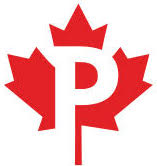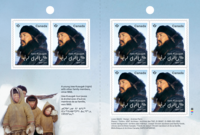
| Name | Value |
|---|---|
| Date of Issue | June 21, 2022 |
| Year | 2022 |
| Quantity | 600,000 |
| Denomination |
 PERMANENT™ (P). PERMANENT™ (P).Current monetary value: $0.92. |
| Series | Indigenous Leaders |
| Series Time Span | 2022 - 2023 |
| Postal Administration | Canada |
| Condition | Name | Avg Value |
|---|---|---|
| No Prices for stamp | ||







Jose Kusugak (1950-2011) is considered a Father of Confederation by some for his pivotal role in the creation of Nunavut. Born in Repulse Bay, Northwest Territories (now Naujaat, Nunavut), he attended residential school and later worked as a teacher, linguist, award-winning broadcaster and head of several major Inuit organizations. He was involved in developing a standardized, dual writing system for Inuktitut and explained the land claim concept to communities across the Arctic – coining the phrase “First Canadians, Canadians First” to describe his people. He is pictured on his stamp, along with his name written in Inuktitut.
Proud advocates for the rights and well-being of their people, the three modern-day Indigenous leaders in this inaugural series are honoured for dedicating their lives to preserving Métis, First Nations and Inuit culture and improving the quality of life of Indigenous Peoples in Canada.
The second set of stamps in the Indigenous Leaders series honours three Métis, First Nations and Inuit leaders whose tireless efforts to protect the rights, culture and welfare of their people had a profound influence on Canada’s history.